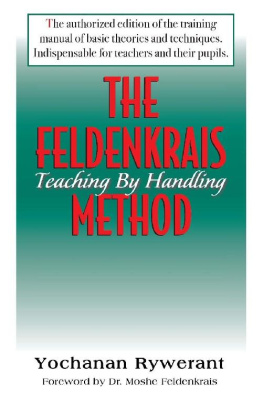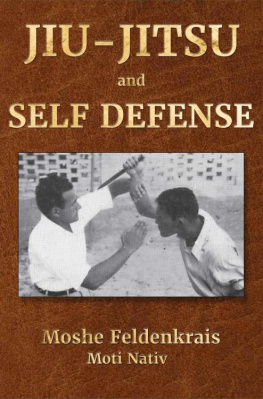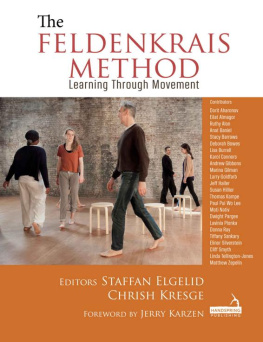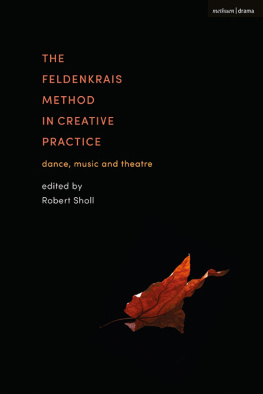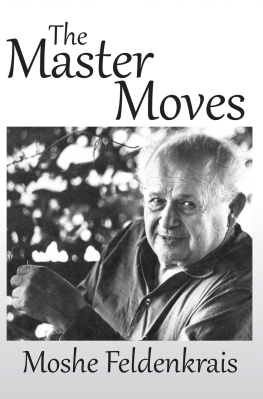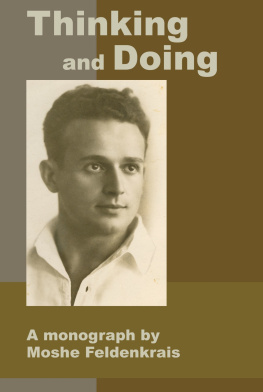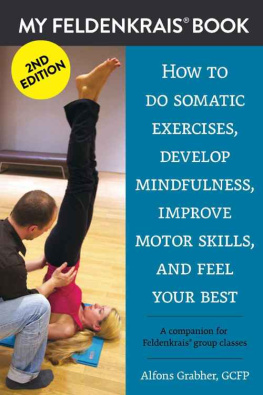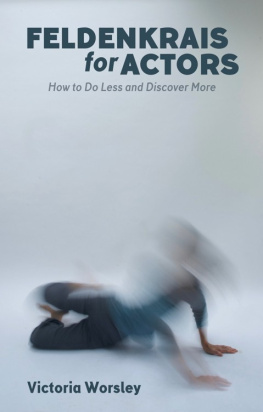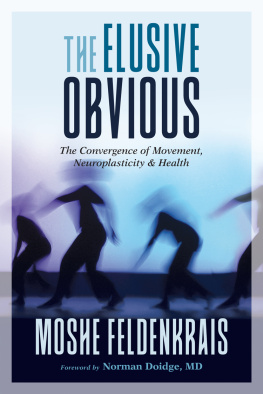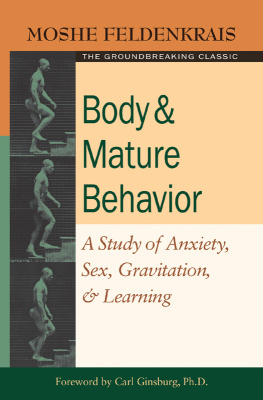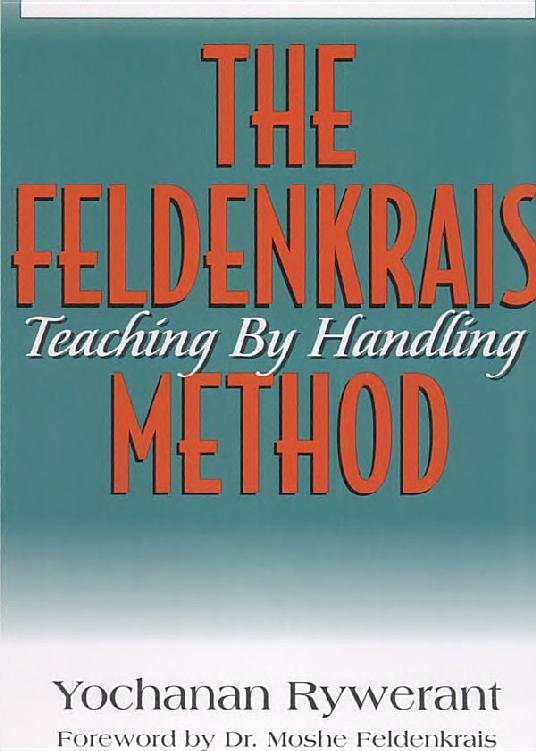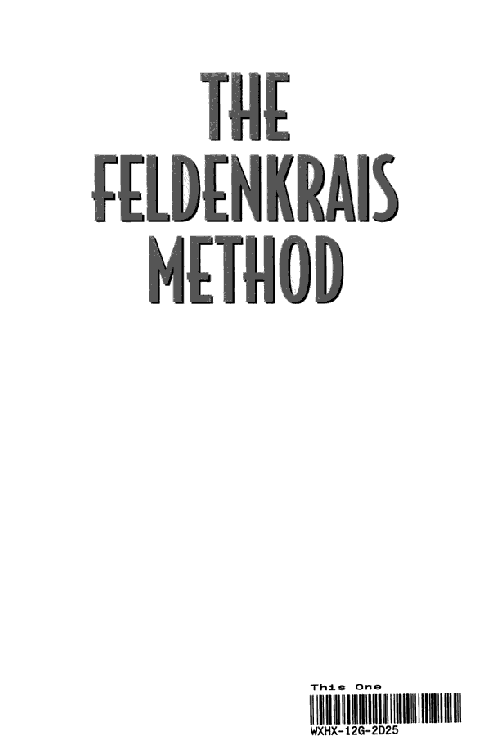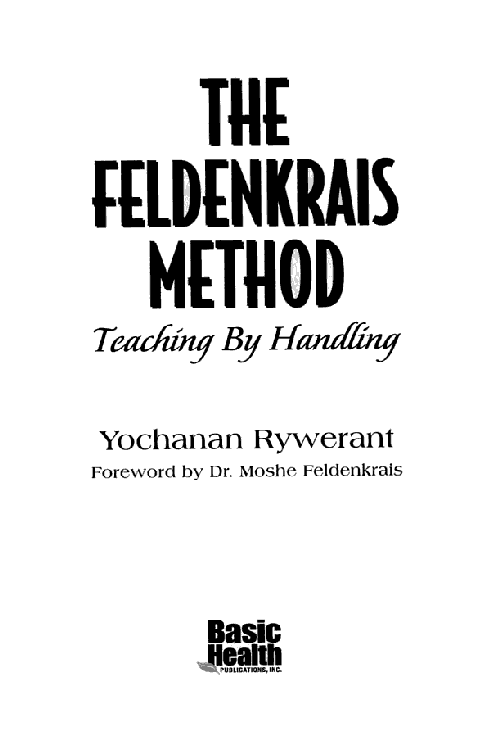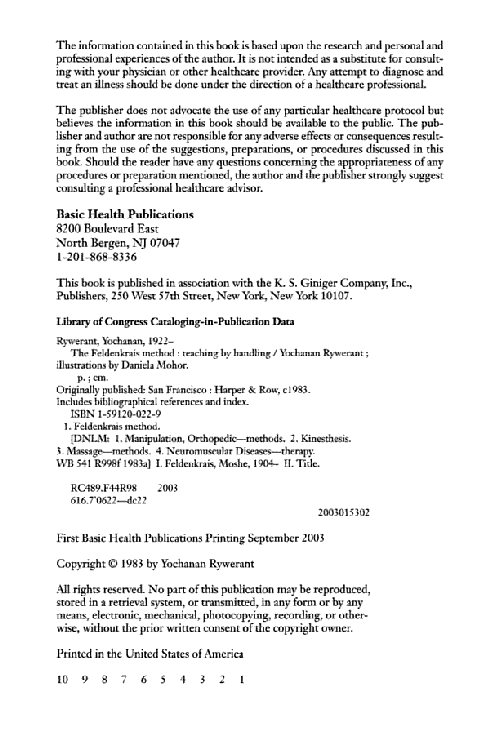manual of basic theories and techniques.
Indispensable for teachers and their pupils
Foreword
Yochanan was a teacher of physics in one of the best schools of Israel. He was at that twenty-eight years running.
Later he joined the Feldenkrais School. He worked thirteen and a half years within close quarters in the same room in which I worked. He has his own "handwriting" like all the others. Everyone learns the method without imitating his teacher. Yochanan is not imitating anybody.
The book in front of you should be reread several times. That way you are likely to get most of the goodness of the book. Good luck!
M. Feldenkrais
Tel Aviv, Israel
Preface
The Feldenkrais Method: Teaching by Handling is a momentous publication, because it makes accessible a unique form of human education. The book is a presentation of the system of Functional Integration devised by the Israeli scientist Dr. Moshe Feldenkrais. The Feldenkrais system is a way of handling the body by communicating specific sensations to the central nervous system in order to improve the functions of the motor system.
Functional Integration is unique in that it evokes changes in the human brain at a level heretofore thought unachievable by any known therapeutic technique; muscular tonicityeven spasticityis actually modified, the range of movement is enhanced, movement becomes more coordinated, and the overall efficiency and comfort of muscular functioning is increased.
In The Feldenkrais Method: Teaching by Handling, Yochanan Rywerant has devised a framework for understanding an immensely subtle and elusive technique for human change. Rywerant has successfully created the archetectonics for understanding a major area of human cybernetic functioning and, in so doing, has effectively established the vocabulary for a new area in the field of nonverbal communication. Feldenkrais, the inventor of this new area of Functional Integration, is also its most brilliant practitioner, as well as its most inspirational and intuitive teacher. What Rywerant has accomplished is to have taken this intuitive clarity and worked it into an ingenious intellectual framework that makes sense of the technique's elusive subtleties. He has succeeded in removing the mystery from a method that creates impressive improvements in the motor system with a remarkable economy of means.
The two major uses of this volume are, first, as a textbook for those wishing to learn the practice of Functional Integration and, secondly, as an explanation of the cybernetic process involved in changing human movement patterns. The latter makes the learning of the Feldenkrais technique far easier than would otherwise be possible. Rywerant has constructed an explanatory superstructure for the technique that makes it clear that there are levels of human communication and transformation whose existence was scarcely suspected before the appearance of Feldenkrais.
Rywerant's conception of the "manipulon" as a basic unit of nonverbal communication is at the heart of this cybernetic theory. And his discussion of the different types of manipulons gives a comprehensive description of the discrete ways in which "handling" can communicate information to the brain. His discussion of the functions of the brain and central nervous system are clear and very much to the point; this clarity allows us to understand how the manipulatory sessions have a certain prescribed form and way of proceeding.
Yochanan Rywerant was born November 7, 1922, in Bucharest, Romania. He lived the bulk of his youth in the city of Cernauti until World War II. Although he had studied for eight years as a violinist, when he entered the University of Cernauti in 1939 he chose to study mathematics. However, after one year of university work, the war intervened and Rywerant, a Jew, was shipped off to a forced labor camp.
After his liberation at the end of the war, Rywerant attempted to immigrate to Palestine, which was at that time under British mandate. But before he could reach Palestine he was intercepted by the British navy and interned in Cyprus for six months in 1947. In 1948 he managed to escape from Cyprus as a stowaway aboard a British ship bound for Palestine (now Israel), where he adroitly shimmied down a mooring line and set foot for the first time in his adopted land.
Following service with the Israeli Defense Forces, Rywerant completed his studies in mathematics and physics at Hebrew University, Jerusalem. In 1952 he accepted a post as physics professor in a secondary school in Givataim, a suburb of Tel Aviv. In that same year he married the distinguished Israeli-born composer Yardena Alotin and the two have continued living in Tel Aviv since that time.
Also in 1952 Rywerant first met Moshe Feldenkrais, who had just begun his famous series of AwarenessThrough-Movement exercise classes in Tel Aviv. He attended these classes regularly over the next fifteen years.
When in 1969 Feldenkrais decided to teach his technique of Functional Integration, Yochanan Rywerant was one of the fourteen members of his first training group. The training was completed in 1971 after three years. But even before that time, Feldenkrais invited Rywerant to become his first assistant in the Feldenkrais Institute on Nachmani Street. The offer was accepted.
In 1973 Rywerant assisted Feldenkrais in teaching an AwarenessThrough-Movement class in Berkeley, California, which was when I met both men. When, in 1975, Feldenkrais accepted my invitation to offer a Functional Integration training program in San Franciscothe first in the United StatesRywerant served as his assistant. This position as teaching assistant continued into the third training program offered by Feldenkrais in 1980 at Amherst, Massachusetts.
Through his work at the Feldenkrais Institute, as well as his own private practice, Yochanan Rywerant has become thoroughly experienced in the theory, practice, and neurophysiological foundations of Functional Integration. Thirty years of acquaintance with Keldenkrais have imbued him with a lucid vision of the precision and care necessary for the successful practice of Functional Integration. It is this same vision that informs the pages of this book and offers the reader an authoritative account of the Feldenkrais system with all of the exactitude and subtlety that Feldenkrais demands.
Rywerant has been previously known to the reading public through his four remarkable case histories, which I had the pleasure of publishing in Somatics magazine. These case histories appear as the last four chapters of this volume, and they illustrate fully how deliberate, precise, and effective the techniques of Functional Integration are. The wonderful story of Hanoch's return to the flute displays the "miraculous" quality that so often accompanies the practice of this technique, just as it illustrates amply the ability of the human central nervous system to learn new ways of functioning far beyond what most people believe to be possible.

